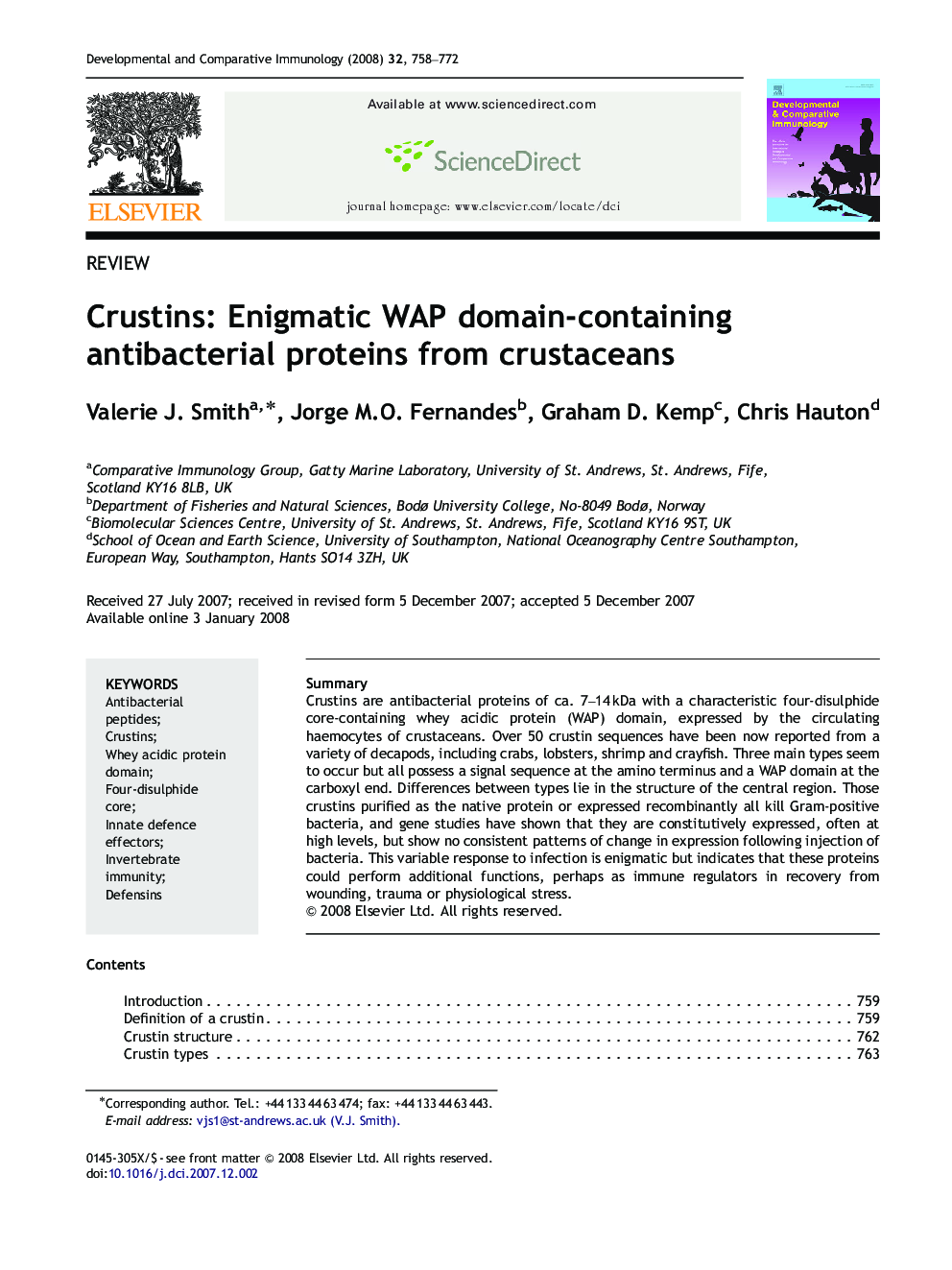| Article ID | Journal | Published Year | Pages | File Type |
|---|---|---|---|---|
| 2430103 | Developmental & Comparative Immunology | 2008 | 15 Pages |
SummaryCrustins are antibacterial proteins of ca. 7–14 kDa with a characteristic four-disulphide core-containing whey acidic protein (WAP) domain, expressed by the circulating haemocytes of crustaceans. Over 50 crustin sequences have been now reported from a variety of decapods, including crabs, lobsters, shrimp and crayfish. Three main types seem to occur but all possess a signal sequence at the amino terminus and a WAP domain at the carboxyl end. Differences between types lie in the structure of the central region. Those crustins purified as the native protein or expressed recombinantly all kill Gram-positive bacteria, and gene studies have shown that they are constitutively expressed, often at high levels, but show no consistent patterns of change in expression following injection of bacteria. This variable response to infection is enigmatic but indicates that these proteins could perform additional functions, perhaps as immune regulators in recovery from wounding, trauma or physiological stress.
